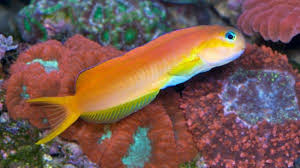Dragons and Their Relationship with Royal Symbols in Chinese Culture

In Chinese culture, the dragon is not merely a mythological creature; it is an essential emblem of imperial authority, divine power, and auspicious fortune. For over two thousand years, the dragon has been a symbol that directly connects to the Chinese imperial dynasty, representing the emperor’s connection with the heavens and his role as the “Son of Heaven.” The dragon has been intricately woven into the cultural fabric of royal symbolism, adorning the robes of emperors, the architecture of palaces, and the imperial regalia.
This article explores the profound relationship between dragons and the royal symbols of China, focusing on the historical, cultural, and symbolic significance of dragons in the context of Chinese monarchy. From the regal dragon robes of the Qing Dynasty to the dragon’s association with the emperor’s divine right, the relationship between the dragon and royal symbols represents more than just artistic expression—it embodies the profound power and authority of the Chinese imperial system.
1. The Symbolism of the Dragon in Chinese Royalty
In Chinese tradition, the dragon is considered the supreme creature in the animal kingdom, a powerful, mystical being that governs the natural elements—particularly water, wind, and rain. Unlike the fearsome and destructive image of dragons in many Western cultures, the Chinese dragon is a benevolent and auspicious being, often symbolizing positive forces such as growth, protection, and prosperity.
For the Chinese emperor, the dragon was the physical representation of his power, authority, and connection to the divine. The emperor, seen as the earthly ruler chosen by the heavens, was said to be the “Son of Heaven,” and the dragon symbolized that connection. The emperor’s role as a mediator between heaven and earth was reinforced by the dragon, an emblem of celestial authority. As a result, the dragon became the most significant and revered symbol in the imperial court.
2. The Dragon in Imperial Robes and Regalia
One of the most prominent ways that the dragon was used as a royal symbol was in the emperor’s attire. Dragon motifs adorned the emperor’s robes and regalia, with intricate designs and specific color schemes that reflected the emperor’s status and power.
The dragon robe, known as the longpao in Chinese, was a distinctive feature of imperial attire. The longpao was typically embroidered with a five-clawed dragon, which was reserved exclusively for the emperor. The five claws on the dragon were a key feature of the symbolism, as it signified the emperor’s unique status as the ruler of China. The number of claws had significant meaning, with dragons with four claws being used by nobility, while dragons with three claws were seen in representations for the lower ranks.
The emperor’s dragon robe was often made from fine silk, and the embroidery featured rich, gold thread to emphasize the emperor’s supreme authority. The robes also incorporated pearls, precious stones, and golden threads, with the dragon’s form carefully crafted to appear both majestic and powerful. The embroidery techniques used to create these robes required highly skilled artisans, and the designs were often arranged in a symmetrical pattern, with the dragon at the center, surrounded by clouds, flames, or other auspicious symbols.
3. The Imperial Throne and the Dragon
The throne of the Chinese emperor, known as the Dragon Throne, is another critical element in the connection between the dragon and royal symbols. The Dragon Throne was intricately designed to reflect the emperor’s power and authority. The throne was often adorned with dragon motifs and placed in the Hall of Supreme Harmony, the most significant hall in the Forbidden City, which was the imperial palace in Beijing.
In terms of design, the Dragon Throne typically featured the imperial dragon carved or painted onto the seat or backrest. The use of dragons in the throne’s design was a constant reminder of the emperor’s divine status and his celestial connection. The throne also served as the focal point of the emperor’s public appearances, reinforcing the idea that the emperor was the center of the universe, a figure that connected heaven and earth.
Moreover, the dragon throne was considered so sacred that it was said to be the seat of imperial authority, where the emperor communicated with his ministers and made decisions for the entire empire. The dragon throne was not only a physical symbol of power but also a spiritual one, representing the emperor’s divine right to rule.
4. Dragons in Architecture: Imperial Palaces and Temples
The dragon’s symbolism extended beyond clothing and regalia and into the architecture of imperial China. The dragon was a frequent motif in the design of the Forbidden City, the heart of the Chinese imperial system, and other royal structures.
In the Forbidden City, dragons could be found in various decorative elements, including tiles, columns, and rooftop ornaments. The yellow roof tiles, which were used exclusively in imperial buildings, were often embossed with dragon motifs to emphasize the emperor’s exclusive right to live in such structures. The dragon pillars and dragon carvings throughout the Forbidden City further reinforced the association between the dragon and imperial power.
In addition to imperial palaces, the dragon was also featured prominently in temples dedicated to heaven and earth, where emperors conducted rituals to maintain harmony between the celestial and terrestrial realms. In these temples, the dragon was depicted in murals and sculptures, often in scenes that symbolized the emperor’s authority over the natural world.
5. The Dragon in the Imperial Seal
The imperial seal was another critical royal symbol where the dragon featured prominently. The seal, a symbol of the emperor’s authority, was used to authenticate official documents and decrees. The imperial seal was often carved with a dragon motif or even included a small dragon figurine as a part of the seal’s design. This emphasized the emperor’s connection to the dragon, as well as his divine power to rule over the empire.
The dragon-shaped seal was an essential symbol of the emperor’s authority. It was considered a sacred object, one that only the emperor could use, and it signified the emperor’s role as the intermediary between the divine and earthly realms. The seal’s dragon imagery was symbolic of the ruler’s power to make decisions that would affect the entire empire, and it was a tool that reinforced the emperor’s sovereignty.
6. The Dragon and the Emperor’s Court
The imperial court was deeply influenced by the symbolism of the dragon, with various officials and courtiers using dragon imagery to assert their connection to the emperor’s power. The dragon was often depicted in court decorations, banquets, and ceremonial items, such as fans and drums, reinforcing the link between the emperor and his court.
At official imperial ceremonies, such as the imperial birthday celebrations or the New Year festivities, the emperor would often be surrounded by dragon imagery. These ceremonies were an opportunity for the emperor to publicly display his connection to the heavens and his status as the Son of Heaven.
The dragon dance, a popular traditional performance still practiced in modern Chinese festivals, was also a prominent feature of royal celebrations. During royal festivities, performers would dance with dragon-shaped costumes, emphasizing the imperial power of the dragon and reaffirming the emperor’s divine right to rule.
7. Dragons and the Imperial Calendar
Another intriguing aspect of the dragon’s connection to the imperial court was its role in the Chinese imperial calendar. The dragon was used to signify important events, such as the emperor’s birthday or the annual celebration of his rule. According to traditional Chinese belief, the appearance of certain dragon patterns in nature, such as in the movement of clouds or the flow of rivers, was seen as a celestial sign indicating the prosperity of the empire or the need for divine intervention.
During the Qing Dynasty, the imperial calendar included several references to the dragon, and specific lunar years were designated as the “Year of the Dragon”, marking a time of great significance. In these years, the emperor would conduct special ceremonies, and the people would celebrate the dragon’s power, seeking blessings for good fortune and prosperity.
8. The Dragon’s Legacy in Modern China
While imperial China officially ended in 1912, the dragon remains a potent symbol in modern Chinese culture, especially in regard to national identity and pride. In contemporary China, the dragon continues to be a symbol of the nation’s strength and unity, and the imagery of the dragon is often used in national celebrations, such as the Chinese New Year and the Olympic Games.
Today, the dragon’s association with royalty is celebrated in festivals, art, and public monuments. Despite the changes in political systems, the legacy of the dragon as a symbol of imperial power persists, serving as a reminder of China’s long and rich history.
Conclusion
The dragon’s deep connection with Chinese royalty is not merely a historical curiosity but a reflection of the spiritual and cultural values that shaped imperial China. From the emperor’s robes to the Dragon Throne, the dragon symbolized divine authority, protection, and power, establishing an enduring connection between the ruler and the heavens.
This sacred relationship between the dragon and royal symbols reinforced the emperor’s status as the ruler of both the human and divine realms. Today, the dragon continues to serve as a powerful symbol of Chinese cultural identity, a legacy of the mighty imperial system that once ruled over one of the world’s oldest continuous civilizations.

